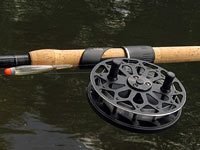This is a story of a very unusual fishing device. The thing is called Nelma and is a centre-pin reel. Designed, developed and produced in Russia. Originally introduced in 2009 as Nelma KP-114, it provided an affordable high-quality alternative to expensive British and American trotting centre-pins on the one hand and to rare and expensive custom-made Russian spinning centre-pins on the other hand. Now, in its second generation (M1), it shows some refinements, but nothing essential needed to be changed — the reel satisfied its users.

But who needs nowadays a classic centre-pin reel like Nelma? In Russia, centre-pins are used for jigging and heavy spoon fishing by some discerning anglers who have learned to appreciate the direct contact to the fish and certain weird but incredibly effective lure retrieval techniques that no other type of reel can manage. Elsewhere, there is a demand for centre-pins (or “pins” for short) from float fishing addicts, especially from those who practise trotting and want a drag-free drift of the float. As for myself, I like stick fishing and long trotting very much and have been using pins for decades now. Therefore, in this review I will concentrate on float fishing.
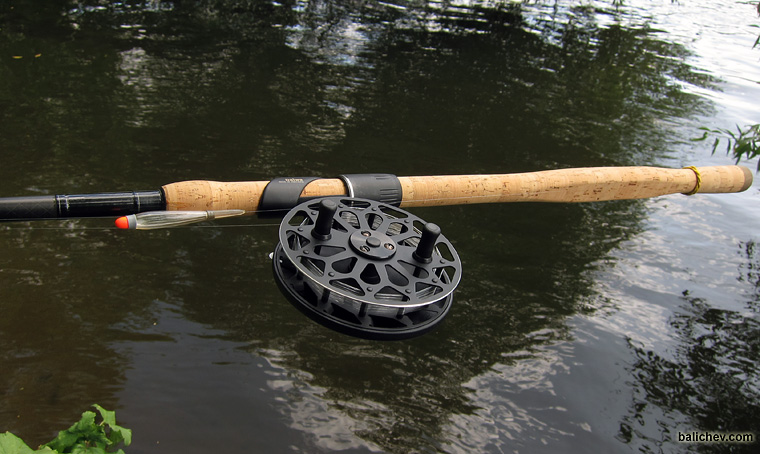
Let’s take a look at the centre-pin reel market. All current trotting pins can be roughly divided into three categories.
(a) Premium models made in the United States, Canada or Great Britain. Most of them are machined from solid bars of aluminium alloy. The prices are rather high. Some models seem to be overpriced.
(b) Middle class models. Мade in China. Some of them are very good. Machined from solid bars of aluminium alloy.
(c) Cheap Chinese OEM reels. Some of them are made by means of zinc alloy die casting — a disaster. Other models are even worse.
In terms of price, the Nelma could be placed in the second category. However, several of its features are quite unique. It outcasts any other commercially available pin I know, and it is promoted by its makers as a very special reel. What is so special about it?
Firstly, the very low inertia of its high-quality riveted spool* eliminates the need for difficult casting techniques like Wallis cast. You can cast very light baits and rigs (from 1/7 oz upwards) 20 yards or farther, and no tricks of any kind are required.
*Perhaps, drum is the word to use when talking about a centre-pin reel. However, it seems to be outdated, so I will stick to spool.
Secondly, it is unusually rugged for its size and weight. Its designer V.Pilipchuk claims that it is capable to resist loads up to 33 lb when playing a big fish (by the way, the name of the reel is borrowed from the fish species Stenodus nelma which can attain a weight of 110 lb!).

To get a better understanding of relations between weight, toughness and design, a brief look back into the history of pins is clearly indicated.
It seems that the centre-pin reel’s origins date back to the 1890’s. Its ancestor the Nottingham reel tended to be very simple, most of models having no check of any kind. The wide-arboured wooden spool rotated on a metal axle and was attached using a brass nut.
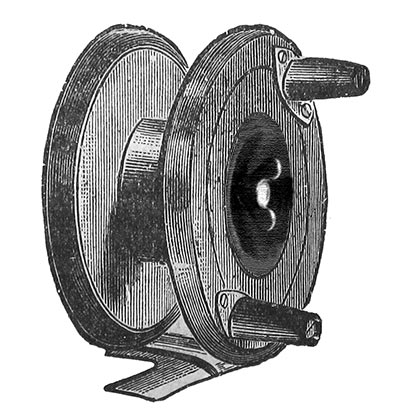
Then, to the end of the 19th century, a latch appeared which allowed the spool to be released by pressing a button. The one-piece wooden spool was superseded by a riveted one with Ebonite or aluminium plates. The most important news was, however, the introduction of an on/off click-check. And the spoked design of Coxon Aerial (and later Allcock Aerial) reels turned out to be not only one of the most attractive but also a timeless one.

By the way, the last centre-pin reel made by S.Allcock & Co. was the famous Match Aerial launched in the mid 1960s. Billy Lane of Coventry described it as the best trotting reel ever made.
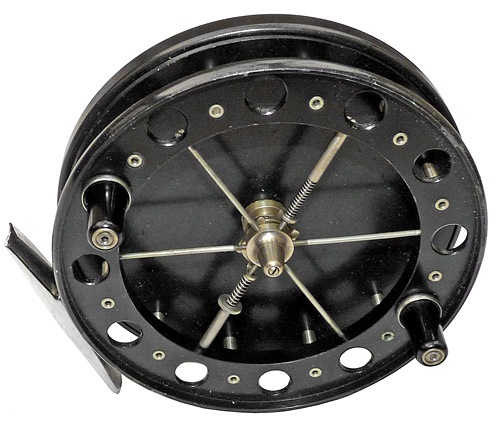
If you take a closer look at all those famous centre-pins, you will notice one thing they have in common. Their spools are made from riveted plates. Very few current pins feature this design, but look at Fred Crouch’s near-replicas of the Match Aerial.
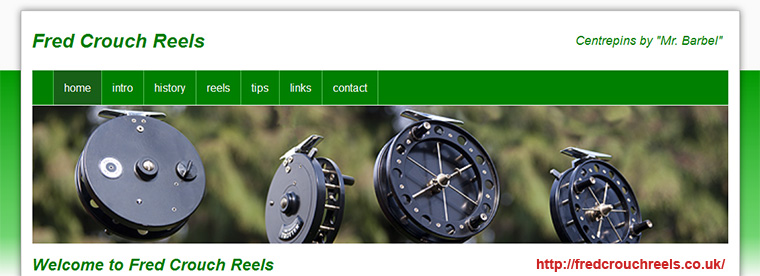
Very similar in appearance but not in construction are modern Young’s reels. Superbly made and certainly nostalgic-looking yet completely different from the old ones.
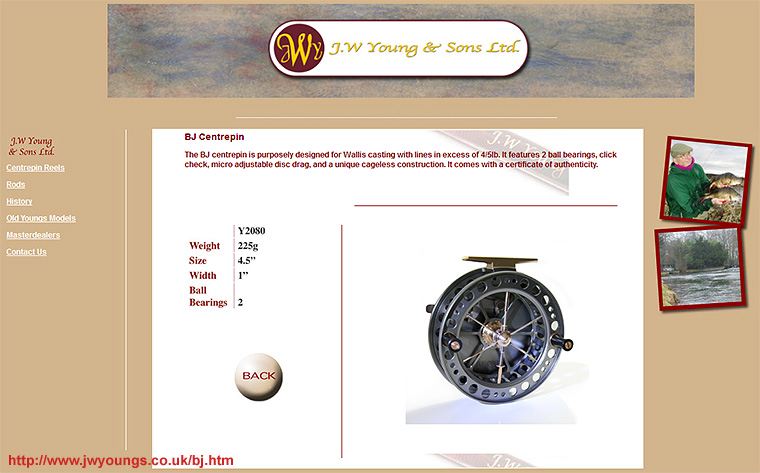
The point here is that most current pins have backplates and spools machined from solid bars of aluminium alloy. And why? Modern tools and technologies make it easier and cheaper to produce a machined one-piece spool than a high-quality spool with riveted plates. With CNC machining, it is a child’s play to produce a wonderful shiny pin. However, the method has its drawbacks, and one of them is a relatively low toughness of reels caused by some properties of applicable alloys.
Here is an example. One of my all-time favourites is The Bewick, made in England by Greys of Alnwick. I like the looks and the feel of it very much.
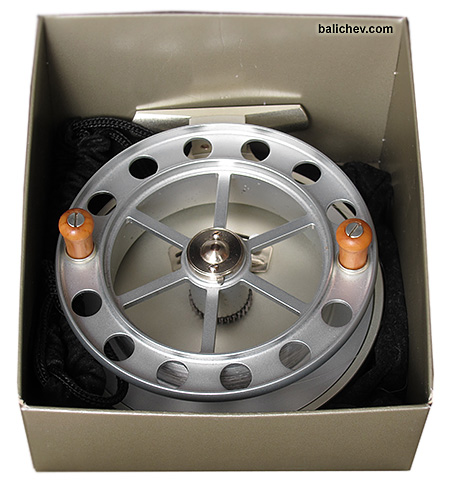
It’s a very nice, very light centre-pin that often accompanies me on my fishing trips. A gem. Nevertheless, in certain respects it is technically inferior to Nelma.

To quote the makers’ description of The Bewick, this reel is “evoking memories from times past”. And a few lines further down: “Ultra-lightweight aerospace grade (6262) bar stock aluminium”. Other modern pins, for example The Talisman by John Milner, are “made from solid bar stock 6061 aluminium”. It is worth mentioning that aluminium alloys of the 6xxx series (with magnesium and silicon) are notably easy to machine and can be precipitation hardened, though not to the strengths that some other alloys can reach. What’s more, they are highly corrosion resistant. No wonder that the 6061 and the 6262 are known as two of the most commonly used general-purpose aluminium alloys. Something quite different is the D16T (aka 2024) used in Nelma. It does combine a very high strength with a remarkable ductility. Why then not simply machine a reel from a bar of D16T? Because when trying to design a spool combining high strength and low inertia you will inevitably come to a lattice structure resembling the Eiffel Tower or an electricity pylon, а structure that would be very difficult to machine from a high-strength alloy. In a bar of alloy, there are always some internal stresses present, and as more and more layers of metal are removed by a cutting tool, those stresses tend to give you most unpleasant surprises. The reject rate would be very high, and even spools with no apparent flaws would be probably very brittle. The picture below shows the spool of a custom-made Russian reel machined from super-strong V95 (aka 7075) aluminium. It’s a technical masterpiece, but it has already some barely visible cracks.

A riveted spool is a quite different story. To get your spool plates, you just have to punch out pieces from aluminium sheeting of required thickness. Admittedly, the rivet head forming and the subsequent machining aren’t easy, but the result is worth the effort. This way you can produce a very strong spool that does not break or crack on impact — at worst it becomes slightly deformed.
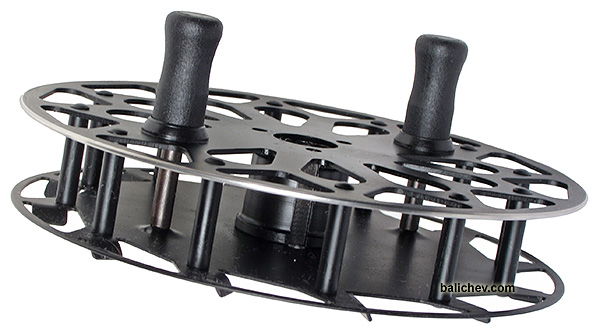
Nelma’s spool is made exactly that way from D16T/2024 aluminium alloy. It is anodised and varnished in black. Offered in 114 mm (approx. 4 ½″) diameter (probably the most useful size for float fishing!) it is 18 mm wide and weighs 3 ¼ oz (inclusive all rotating parts). That’s neither heavy nor featherlight. However, aside from the total reel weight, the centre-pin’s spool weight per se is of little relevance.
There is a common belief that the lighter the spool is, the less inertia it has e.g. the easier it starts and stops. That is not correct, because inertia is defined not by mass but by radial mass distribution. It’s not the mass that matters but the moment of inertia, or, to be more exact, the reduced mass, which is equal to the moment of inertia divided by the square of the radius of the upper line layer on the spool. Therefore, the more material is placed near the spool rim, far away from the axis of rotation, the higher is the inertia of the spool. On the other side, the mass of the central part of the spool has very little effect on the total inertia of the spool.
Let’s consider Nelma’s spool from this point of view.
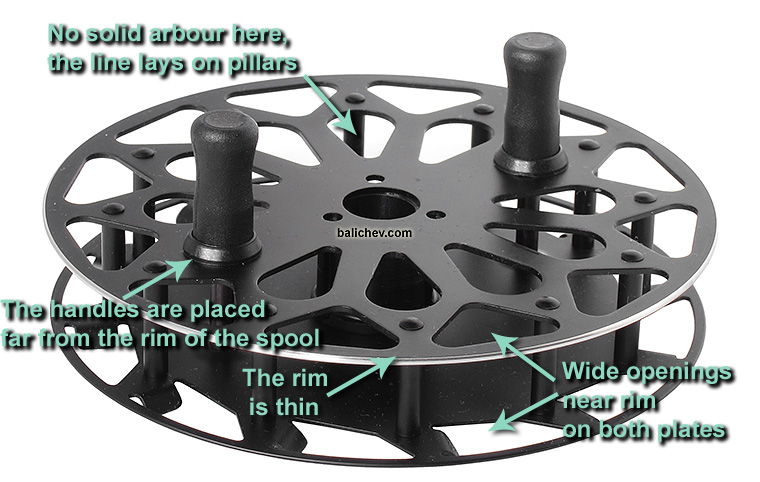
As you can see, the outer part of the spool is kept as light as possible.
And now the Bewick.
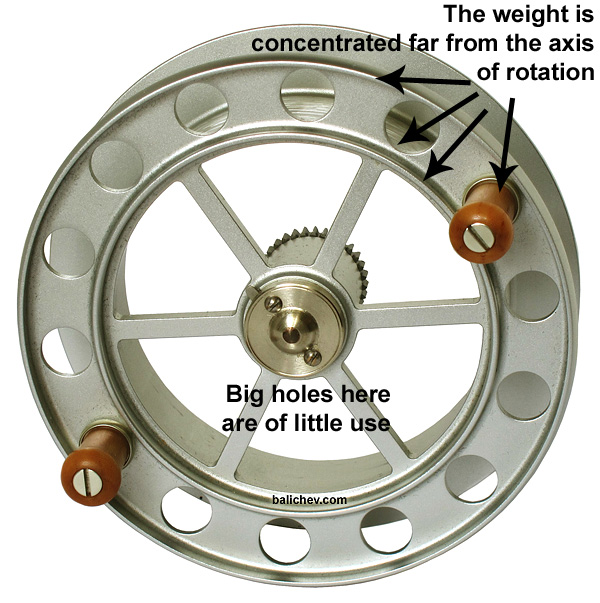
Here, the weight is concentrated far from the axis of rotation. And the same can be said of most other contemporary pins. That’s why they “need a little more weight/force to start the spool turning”. Compared to them, Nelma is a much better casting tool.
Some cheap Chinese reels feature heavy die-cast zinc spools.
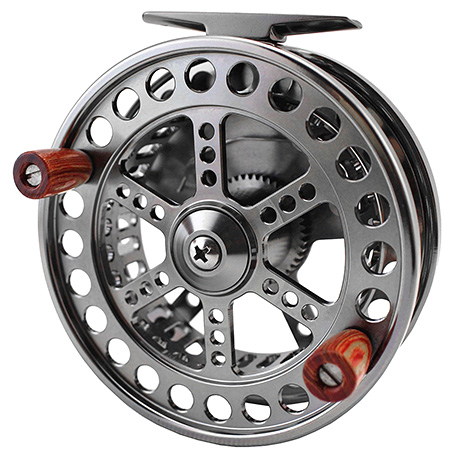
The inertia of such a spool is, of course, enormous, and the casting of light weights is impossible.
But let’s get back to our Nelma. Its spool rotates on two high-quality sealed ball bearings. The spindle is machined from high-strength carbon steel and galvanised.

The ball bearing housing is protected by the drag washer (11).

There is a “service port” (1) for oiling ball bearings. After removing the rubber plug (2), put a few drops of oil in the port to maintain the smoothness of rotation.
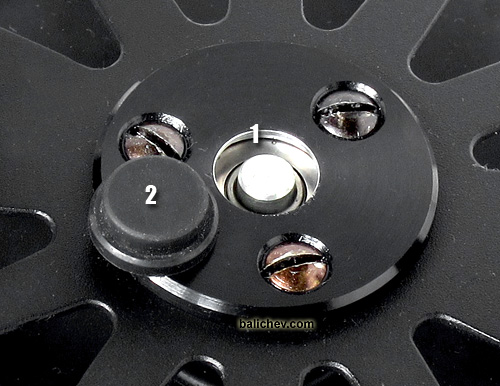
Some people make a difference between “true pins” and “ball bearing pins”. Here’s a typical example from the web: “The spool of the true pin rotates directly on the pin”. Well, not exactly, there is, of course, a bush, but the point is that a true pin shouldn’t have any ball bearings. In my opinion, that’s rather a matter of taste. There are premium centre-pin models that are offered with either bush or ball bearings — John Milner’s Kingfisher is a good example. Each system has its pros and cons, but on the whole a good ball bearing construction is second to none.
The black plastic handles are ergonomically shaped and far superior to the brown ones of early Nelmas. Their shape is simply superb.
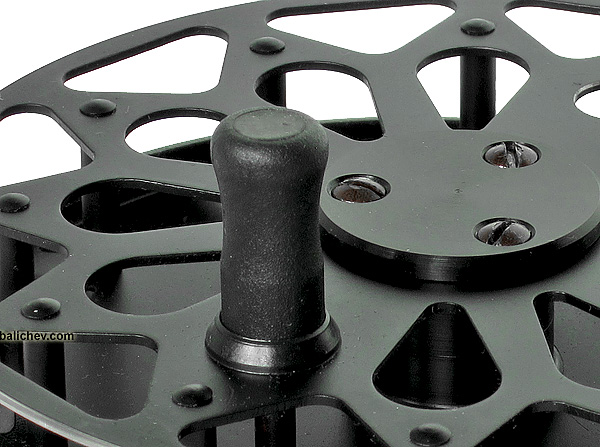
The axles (15) are made from high-strength carbon steel. They are tempered, galvanised and blackened. Polyamide collars (16) and steel washers (17) reduce friction while rubber plugs (18) offer some protection against sand.

The backplate of Nelma is made from D16T aluminium alloy, anodised and coated with black thermosetting enamel. It is exceptionally strong. The steel foot (A) is attached to the backplate by rivets.
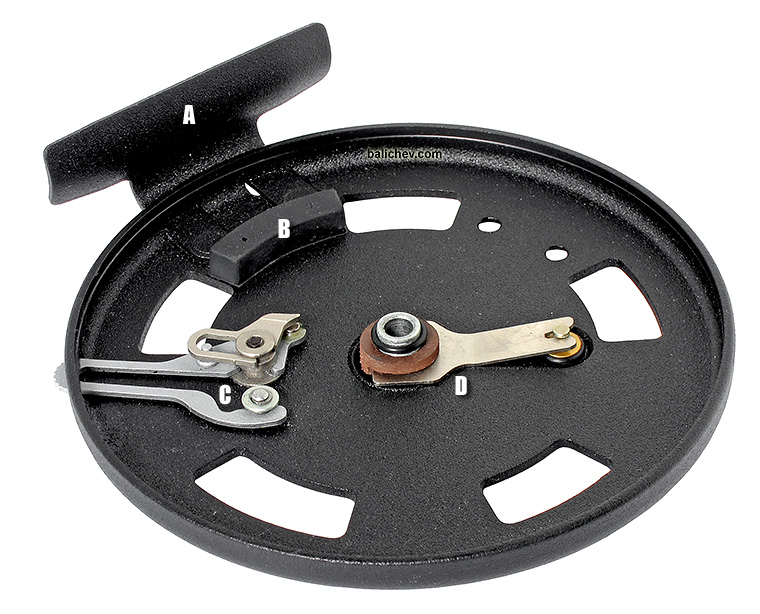
To the inside of the backplate are also attached
- the brake pad (B)
- parts of the anti-reverse mechanism (C) and
- parts of the drag mechanism (D)
There is also a massive steel bush (E) for the spool axle (F), the axle being secured from the outside of the backplate by a big knurled nut (G).

Most classic pins feature a simple clicker system used to prevent line overruns when rigging or during transport. The Nelma offers an anti-reverse option. With anti-reverse engaged, the spool can rotate only in one direction; the noise of the ratched is very low.
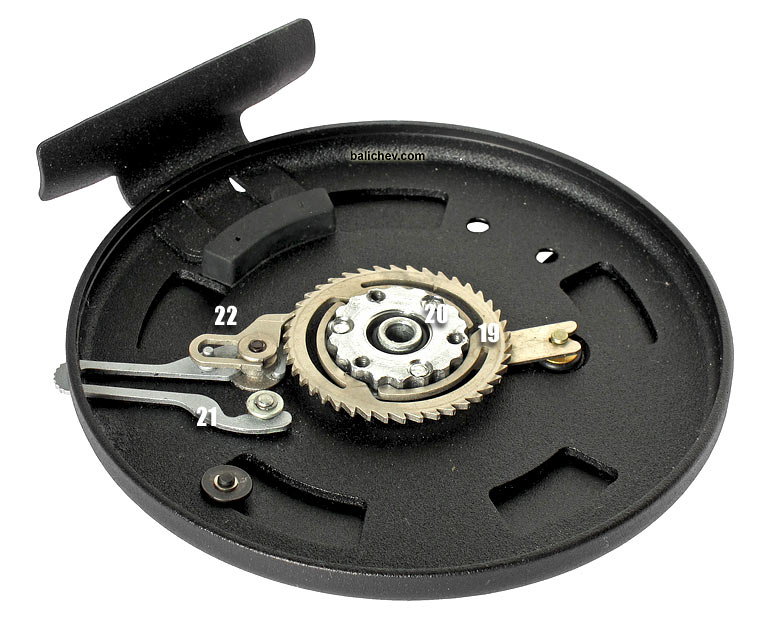
The ratchet wheel (19), the dog (22) and the lever (21) are made from spring steel and feature a protective coating. The axle (20) of the wheel is machined from carbon steel. Don’t look for a dog spring, though. There is a powerful magnet (23) instead!
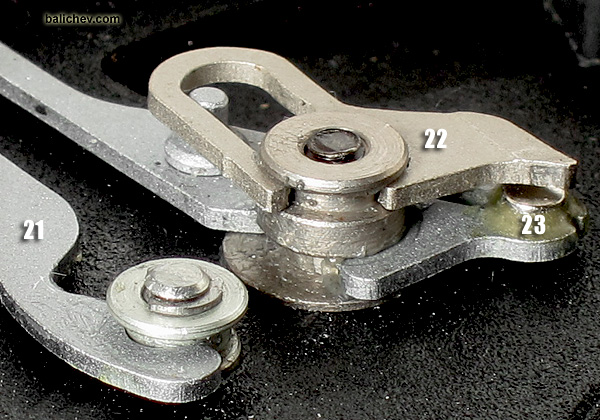
The end of the lever is shaped thus:
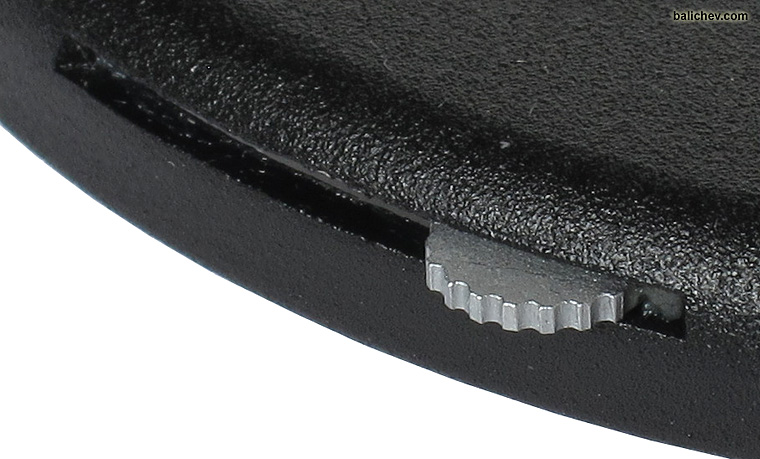
There is a kind of integrated securing device: the central part of the ratchet wheel and its axle constitute a second ratchet which engages automatically when tension reaches approx. 2 kg. For light fishing it is however of little or no importance.
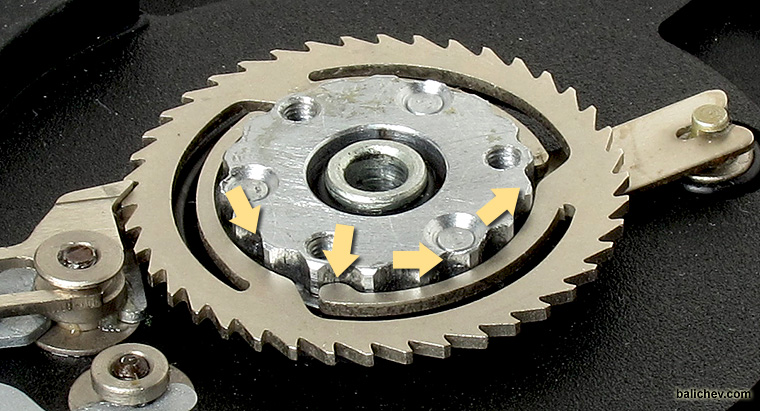
A certain disadvantage of the anti-reverse mechanism it that its presence creates a need for two reel modifications similar to right-hand and left-hand multipliers, while many simple clicker pins are universal in this regard. Unlike multiplier reels, centre-pin reels can hang below the rod as well as sit on top of the rod. What’s more, the line can be coming of the top or of the bottom of the reel. That’s why the terms “right-hand” and “left-hand” are inappropriate. Instead, we should differentiate the modifications by the direction of the spool’s rotation (when retrieving line).
- Nelma Type-R: clockwise rotation
- Nelma Type-L: anticlockwise rotation
Another feature that I miss on some modern pins is the adjustable drag mechanism to control the spool’s rotation during casting or trotting. Here it includes a drag washer (24) and a steel spring (25) that presses the washer against the polished surface of the ratchet wheel’s axle.

A rubber ring (27) holds the washer in place. To adjust the drag, you have to turn the nut (28) on the outside of the backplate.
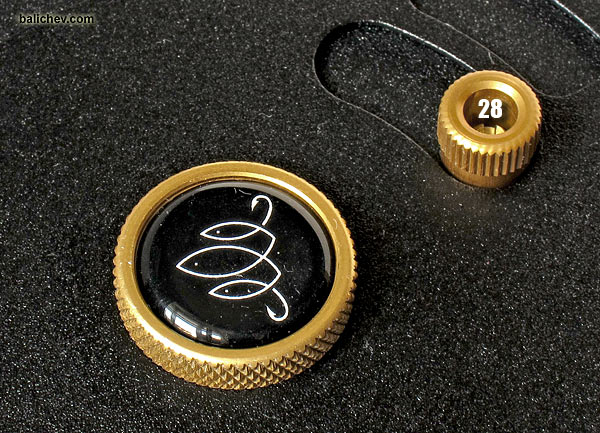
The drag can be used to slow down the spool in the middle and at the end of the cast. Furthermore, it can prove useful when trotting heavier floats in faster current. A similar feature can be found on most Aerial type reels, for example on the J. W. Young Purist ll where it is called micro adjustable disc drag, but the Pilipchuk’s version seems to be one of the most durable and convenient. Dont’t need any drag? Turn the nut anticlockwise as far as it will go. Now you have zero tension. Make several turns clockwise — and there will be drag enough to set the hook at a carp run. Between the two extremes you can easily find every conceivable setting. Really, the drag is very, very fine adjustable.
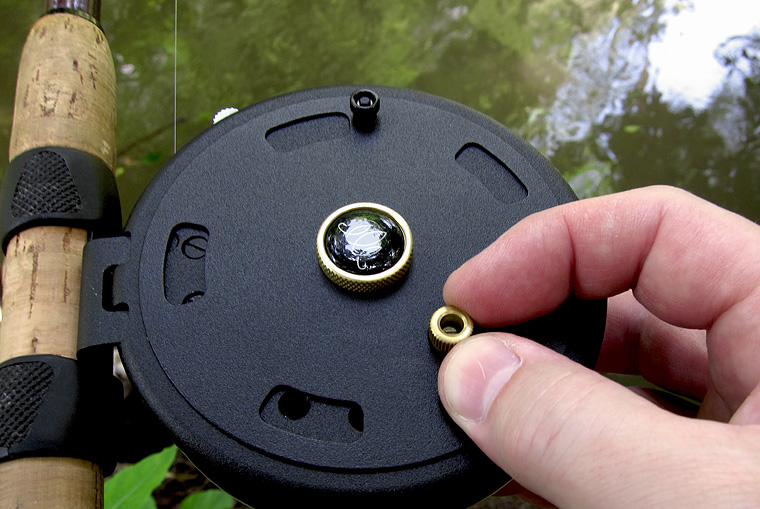
A quite unique feature of Nelma is the patented aerodynamic brake. Its original design incorporates special vanes (29) that slow down the spool when casting.
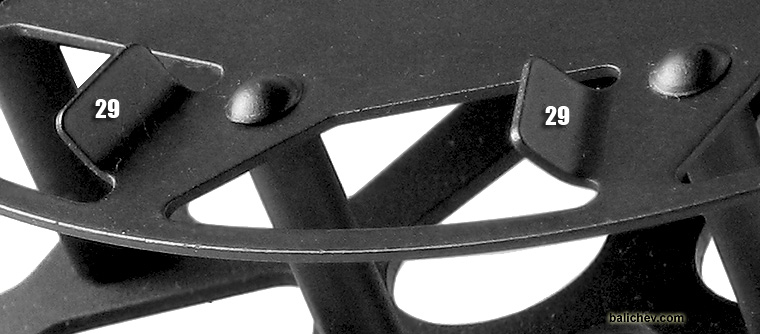
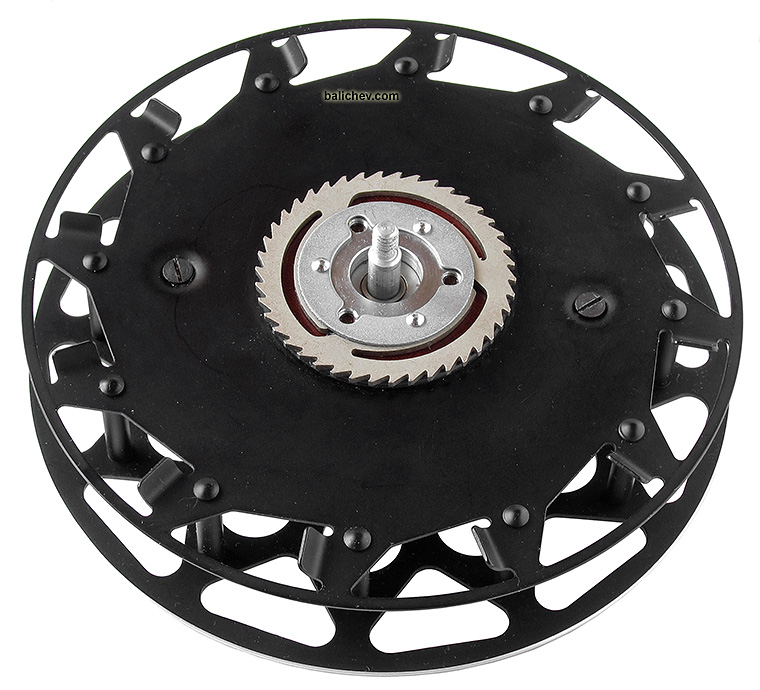
To adjust the brake force, you have to loosen the nut (32) and to rotate the slider (30), changing the profile of air diffusers’ openings (31): the more you open the diffuser, the higher is the brake force.

Like the backplate, the slider is made from D16T alloy, anodised and coated with black thermosetting enamel.
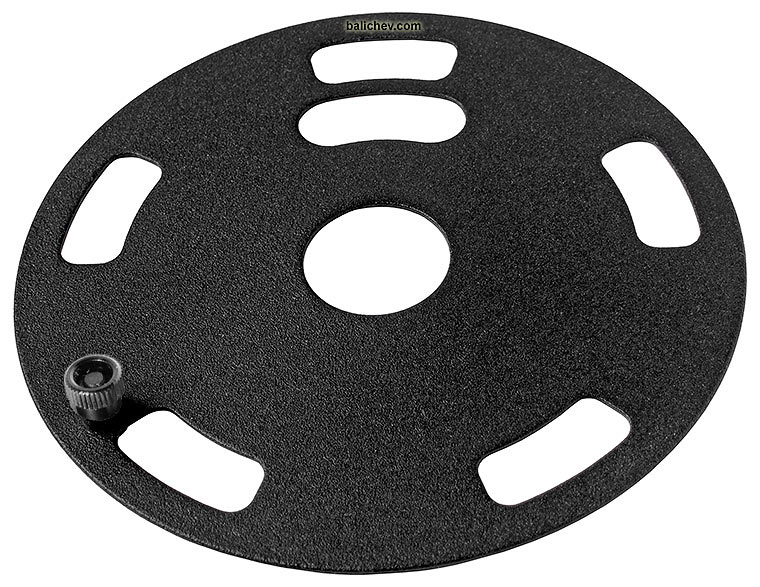
Another patented invention of Pilipchuk is Nelma’s brake pad (33). It is very useful when playing big fish.
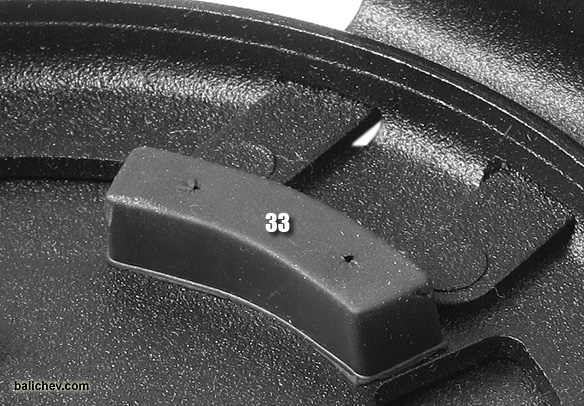
Here’s how it works: the thumb or a finger of the hand that holds the rod should control the spool rim in the area of this brake pad. By pressing the spool against the brake pad, you can adjust the brake power quickly and precisely from zero to amazingly high levels.
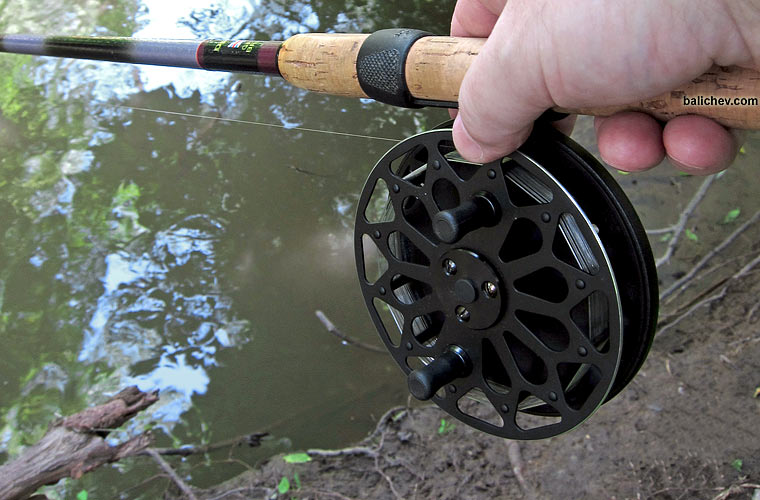
It’s all about the gap between the spool and the brake pad, and the width of this gap should be set by the user. The goal is to reach a state when the spool does not touch the brake pad in the free-running mode but comes into contact with it at the slightest pressure. As a rule, the adjustment of the gap width is necessary on a newly bought reel. Take off the spool, remove two screws that hold the brake pad, then put under the pad one of the two plates supplied with the reel.
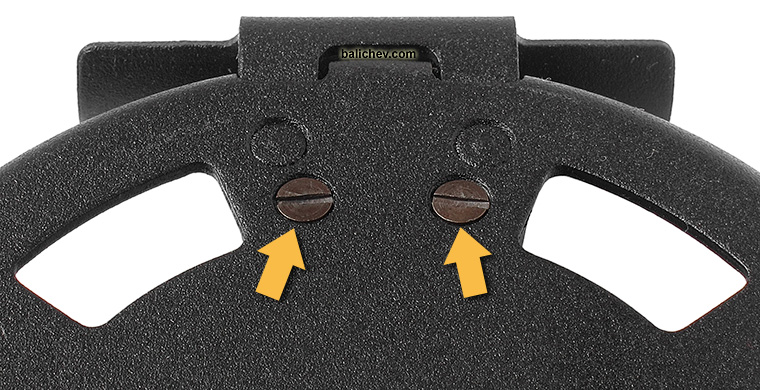

Reassemble the reel. If the brake feels spongy, add the second plate.
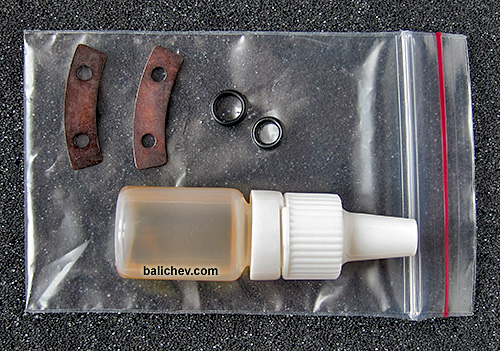
If you prefer to control the spool not directly at the reel foot, try and move the brake pad; the possibility of relocating the pad is one of the advantages of the new Nelma (M1). If you get an older model, you will have to drill the two holes.

The reel comes with a grey coloured pouch featuring the Nelma logo.
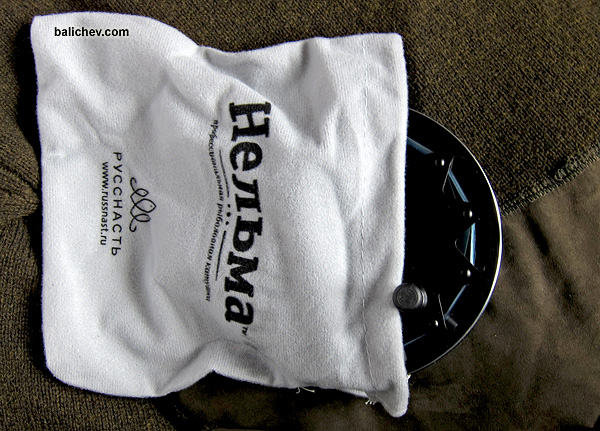
At the moment, I own three Nelmas. All three are used extensively for stick fishing, long trotting and touch legering. They’re tough, dependable, versatile, and not too expensive. I wouldn’t say that they are beautiful, but they can hardly be called ugly. Their design is rather pragmatic and professional, may be a little brutal. At any rate, they match well with my British float and leger rods.
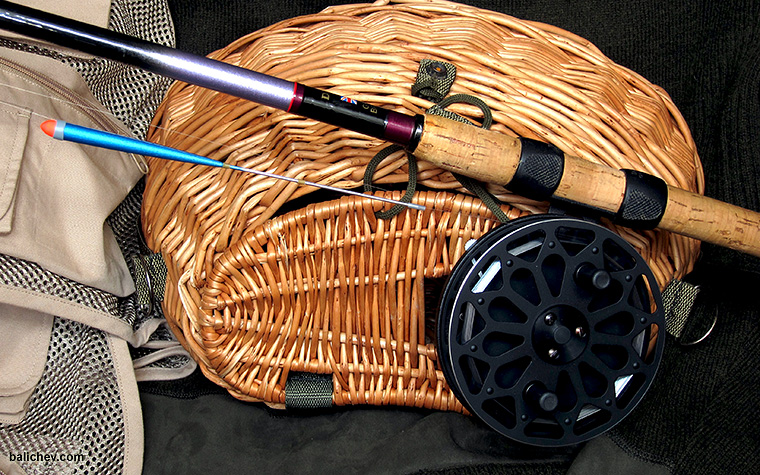
Now, a few words about casting with Nelma. For all my light float work (sticks, light balsas etc.) I use the Wallis cast, but heavier rigs (from 1/7 oz upwards) can be cast without any special tricks.
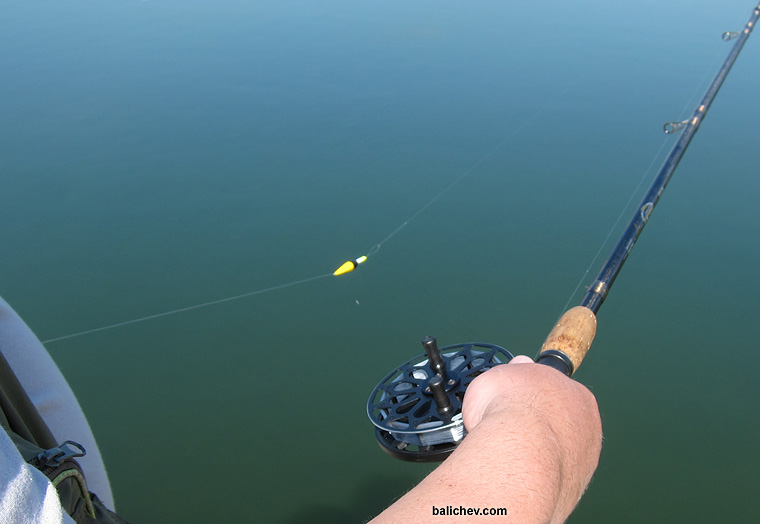
Vasily A. Pilipchuk, the man behind Nelma, its inventor, designer and promoter, never tires of showing how it is done. Thus:
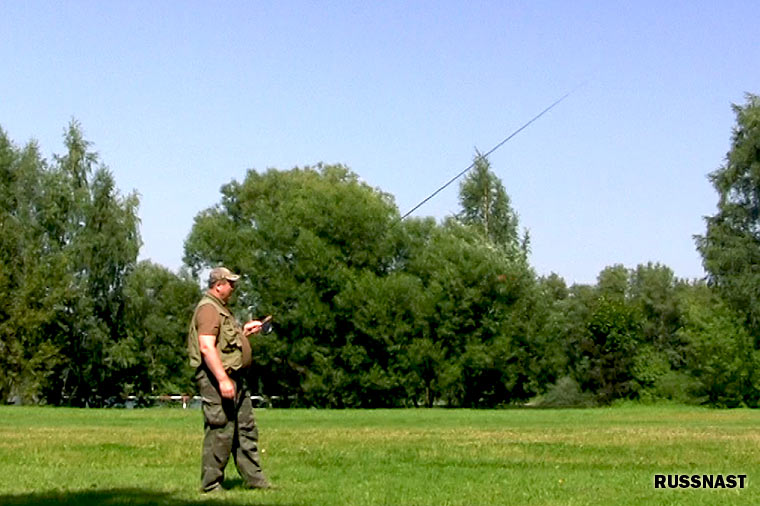
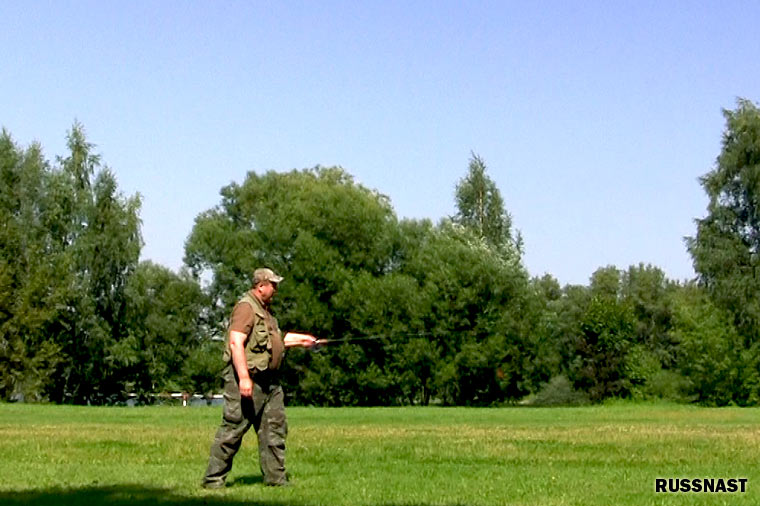

Or thus:
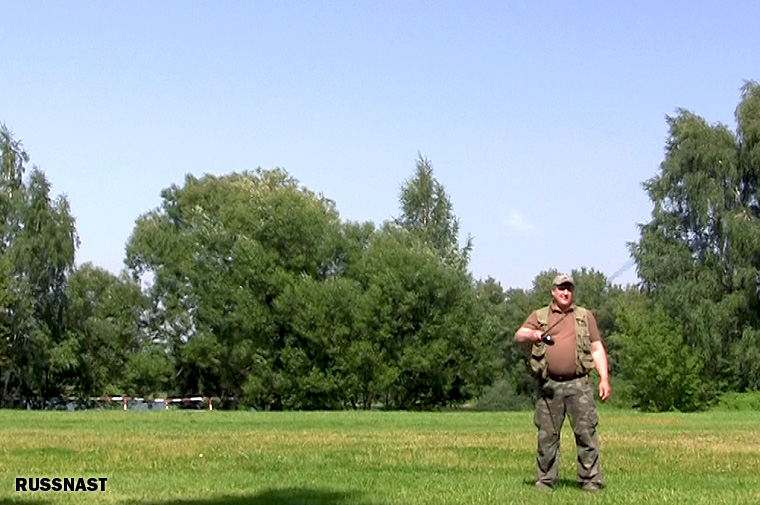
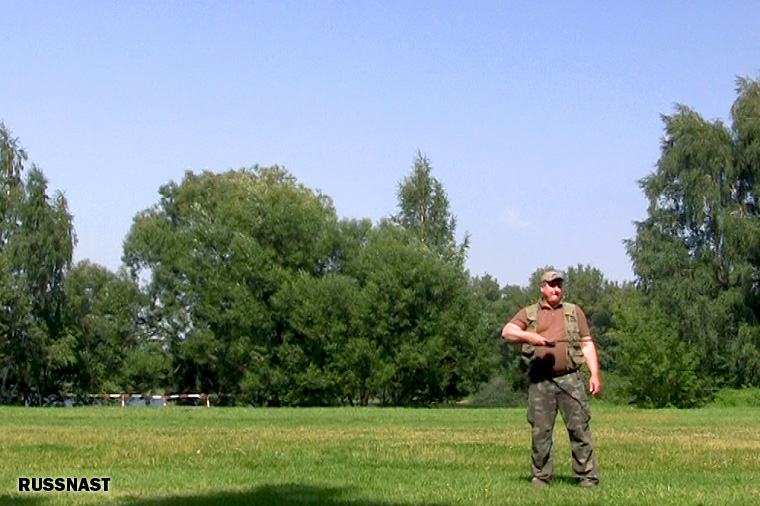

In fact, he can teach even kids how to use his beloved Nelma properly — in a couple of hours!



With its perfect balance and its very low inertia, the spool rotates like a dream. Set the drag to zero, and the spool will start immediately at the slightest movement of line (or air). I fished Nelma on roach rivers with smallest stick floats and never wished a lighter rotation; in fact, my Nelmas run more freely than my Bewick and several borrowed Okumas, let alone the Purist II.
On the other hand, Nelma will easily handle heavy weights, strong lines and fishes like salmon or carp, so if you want one centre-pin to do everything, this reel will probably suit you very well.
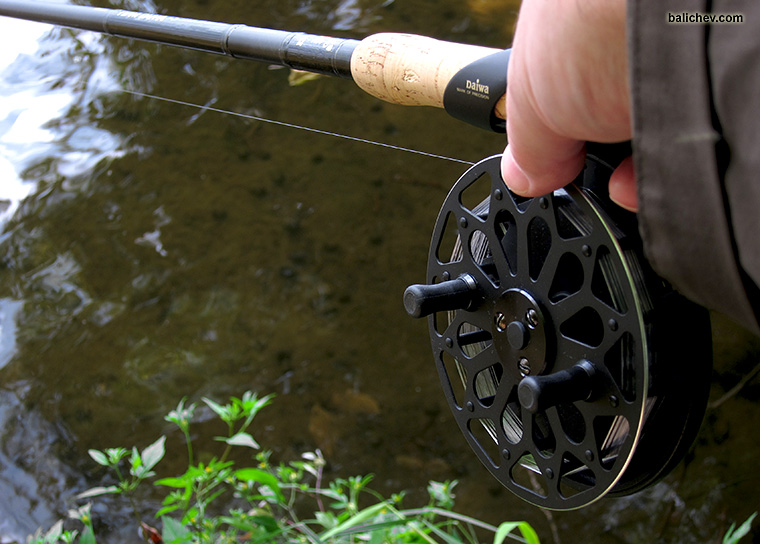
While the inconspicuously looking Nelma may be outshined for many appearance-oriented anglers by numerous “cool looking” centre-pins, the Nelma is a far more sophisticated, more professionally oriented instrument than most models on the market. For the angler seeking a rugged workhorse loaded with unique features, there are hardly any reels to beat this Russian product.
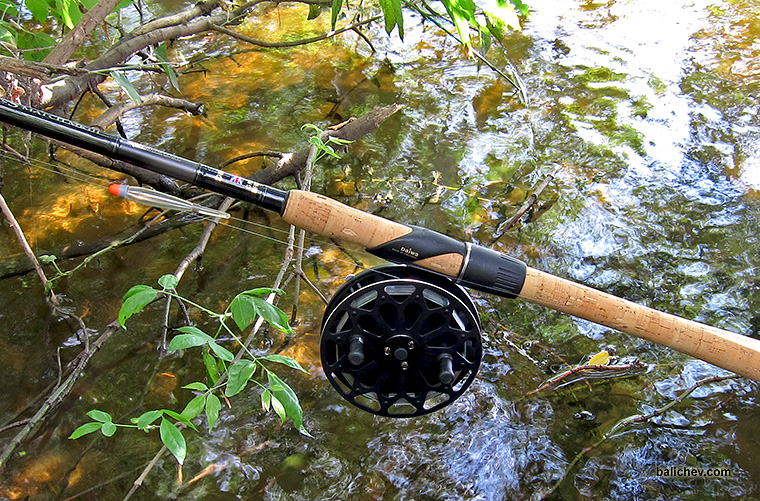
Specifications
Trade Mark: Nelma
Model: Nelma KP-114-M1
Measured Weight: 213 g
Measured Spool Weight: 91 g (inclusive all rotating parts, w/o axle)
Spool Dia: 114 mm
Spool Width: 18 mm
Country of Origin: Russia
Verdict: It might be called a jeep of centre-pin reels.
Author: Dmitry Y. Balichev
E-mail for enquiries: nelma@nelma-official.ru

